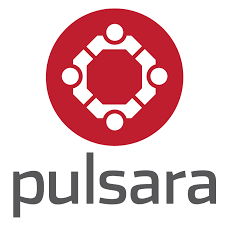Improve access to care and triage less urgent calls for more efficient use of healthcare resources.
 “Hi, Ms. Smith, my name is Dr. Jones. The paramedics tell me you’re having some chest pain today.”
“Hi, Ms. Smith, my name is Dr. Jones. The paramedics tell me you’re having some chest pain today.”
This is what it sounds like when your patient first arrives into the emergency department. It’s also what it sounds like when you’re able to integrate telemedicine into your own prehospital care.
Imagine a camera mounted into the back of your ambulance overlooking the patient. Nearby is a screen that allows your patient to see a neurologist directly and allows the same physician to perform a stroke exam while you transport to the hospital.
Or imagine splitting the screen on your tablet or laptop with a medical control physician while you explain the patient’s ST-segment elevation and then glance over to an image of their 12-lead EKG.
How about the patient who is speaking another language? Imagine having a live interpreter on the other end as you communicate with your rig phone, or allowing the patient to communicate with a translator who is fluent in American Sign Language.
Hospital systems already use telemedicine in a number of patient care settings. From stroke consults to patient transfer-of-care reports to long-distance specialist evaluations and language interpreters, telemedicine has reshaped the landscape of both rural and urban healthcare across our country, offering patients the benefits of face-to-face interaction with a physician in their own homes.
This is the potential – and for some, the current reality – of EMS communications.
ADVANCING COMMUNITY EMS
Telemedicine is the next logical step into the world of mobile integrated healthcare and community paramedicine/EMS.
For repeat patients that may be a part of your community’s crisis intervention or high-intensity user program, why not connect them directly with a psychiatric specialist who can provide some initial evaluation of their situation and then follow up with them as you return for an outreach call?
Direct access with primary care providers, public health specialists, social workers and wound care specialists can all be at your disposal – and available in EMS visits to patients’ homes – because of telemedicine.
Expanding communication opportunities between EMS, doctors, hospitals and other providers can help close gaps in care in your community. Providers, like those in Houston, are already integrating telemedicine into their cache of home care and evaluation options as a part of the Project ETHAN (Emergency TeleHealth and Navigation) initiative.
PATIENT TRIAGE
Telemedicine also has benefits with regards to patient assessment and evaluation from both the initial and ongoing triage perspectives. Project ETHAN is a prime example:
Project ETHAN links EMS providers directly with an emergency physician via video chat. Patients are provided with information about their complaint and encouraged to seek appropriate medical care.
Acute medical care may be provided by EMS as needed, but in cases where transport is deemed not necessary, an appointment for follow-up care is scheduled with a local clinic, as well as a free, round-trip taxi ride. This approach provides the patient with a treatment plan that sets him or her up for continued medical care while conserving EMS and emergency department resources for trauma and other life-threatening calls.
Telemedicine also expands the EMS provider’s resources in the field. If a patient has atypical marks, abrasions, bites or injuries, mid-level and physician providers can be on the other end of your tablet or smartphone visualizing the patient’s condition, triaging him or her. If transport to the emergency department is needed, they can start order sets based on the patient’s condition before you even arrive at the hospital.
In Colorado Springs, EMS providers are activating cath labs for STEMI patients and reserving CT scanners for stroke patients at the push of a button. The one-touch activation of an alert helps shave off precious minutes when “time is brain.”
Aside from community EMS programs, patient triage can be performed in cooperation with medical control physicians as you sign off your next patient release. Rather than you relaying potential complications related to your patient’s condition to the next provider, a physician on the other end of a telemedicine connection can do it.
IMPROVING COMMUNICATIONS AND CARE
It’s one thing to have a 10-minute transport time to a local cardiac receiving facility. But for many patients in rural areas, the nearest hospital can be more than an hour away.
If you have cell phone or Wi-Fi capabilities, then you can have telemedicine capabilities that can improve patient access to care despite geographical barriers.
Telemedicine can help bring the receiving physician to the patient’s bedside for stroke consults, injury evaluations, on-scene walk-throughs or healthcare follow-ups – whether at home, in the ambulance or even at the site of a car crash.
Receiving hospitals can watch you treat the patient treatment in real time. They can document medications along with you. They can see how your patient is really presenting, rather than relying on your best description of their illness or injury. With telemedicine, hospital providers can triage, provide follow-up evaluation and even begin an advanced assessment, all while the patient is in your care.
Fragmented communications can be a challenge for emergency medicine, but telemedicine tools put advanced care providers right next to you in the ambulance. We can improve communications, the patient experience and patient care through this single advancement in technology. Better yet, we can integrate it anywhere!











